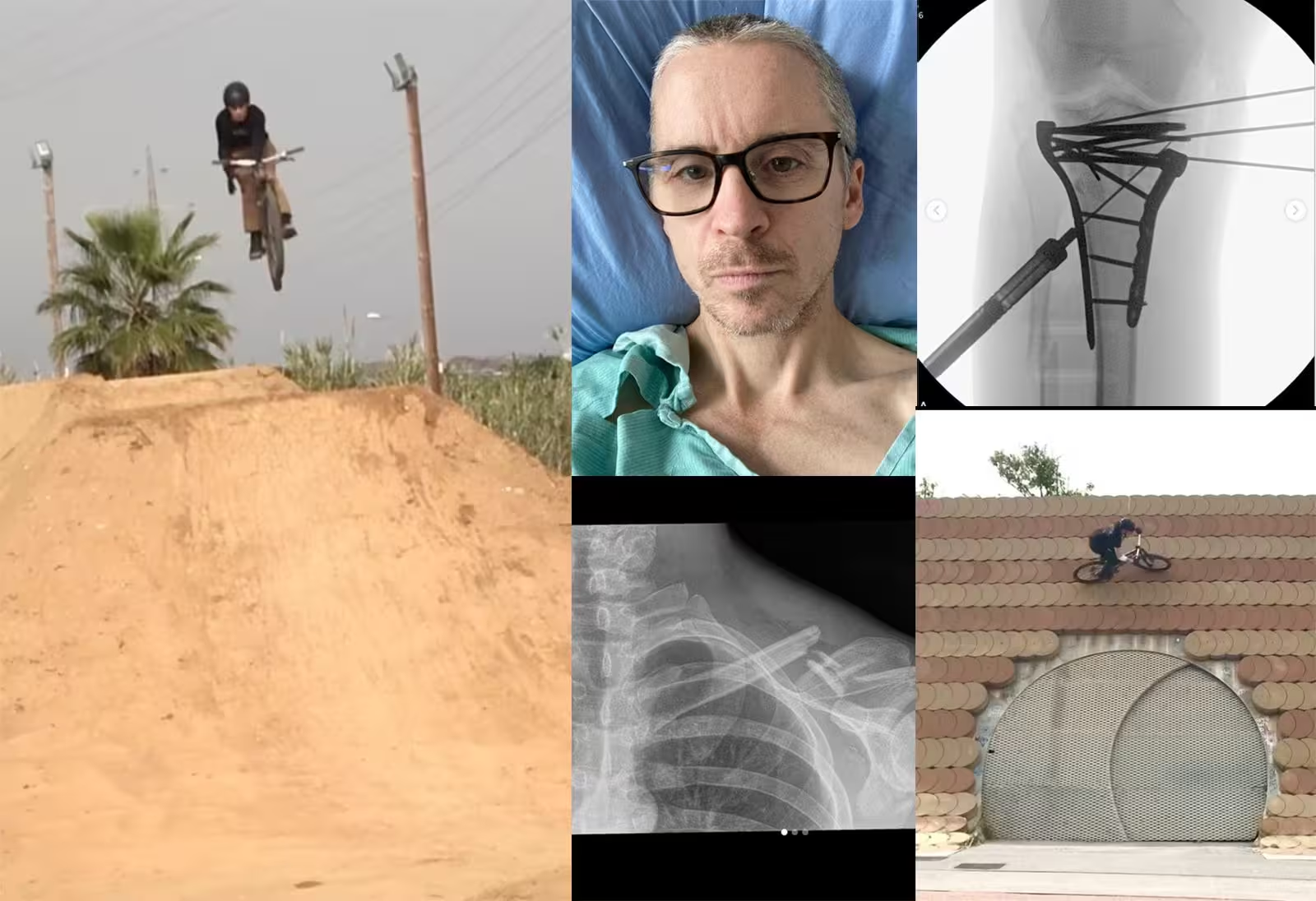For some of us, jumping our bikes isn’t that risky an endaeavor; it’s more of a necessity. Without jumping our bikes how is life worth living? The feeling of being in the air is just too dang good and the thought of never getting airborne again is painful. But aging is inevitable. And at some point, do we have to stop learning new tricks or hitting massive jumps? When is that? Derek Hardinge, a lifelong biker shares his thoughts on the thrill, the risks and that inevitable point where the cost of a crash might just outweigh the thrill.
When passion meets age
Derek started mountain biking relatively late, around 2011, in his 40s. He’s 53 now. But his love for riding began years earlier when he was a kid racing a BMX in the 1980s. Fast forward a few decades and Derek found himself back on the jumps, thanks to a new full-suspension mountain bike. “Getting that full suspension bike completely changed everything,” he recalls. “Suddenly, I could hit jumps and try out tricks.”
By age 50, Derek was tackling tricks that many riders half his age would shy away from, including flips and 360s. His motivation? The pure excitement of being airborne. “There’s something about flying through the air that just feels amazing,” he says.
The reality of learning later in life
For many riders, learning new tricks feels natural when you start young. According to Derek, that muscle memory from his BMX days was key. “I didn’t start from scratch,” he admits. “The basics were there, like air awareness, from all those years jumping as a kid.” But despite that background, learning tricks at 50 is pretty unusual. And it wasn’t without its challenges.
“Crashing is inevitable,” he says, acknowledging that while he still has the drive to practice jumps repeatedly, the consequences of each crash are much harsher now. “Our bodies just don’t handle it as well anymore. I broke my collarbone recently, trying a trick on a bigger jump than usual,” he explains. He also broke his tibia at Joyride a couple years back.
Knowing when to draw the line
Derek is clear-eyed about the risks and he’s realistic about when it might be time to ease back. “I’ve had a few injuries over the last few years,” he admits. “It’s made me think that maybe it’s time to pull back a bit.” He still plans to ride and enjoy the thrill, but with a shift in mindset: “I think I need to stop doing the big tricks and keep more contact with the…
Click Here to Read the Full Original Article at Canadian Cycling Magazine…

